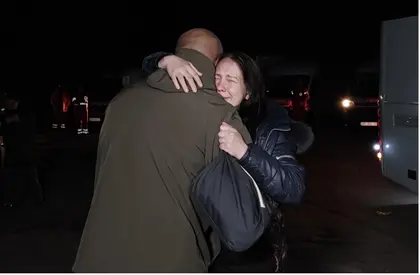During the year since Russia’s full-scale attack, the Ukrainian Military Intelligence’s Coordination Headquarters for the Treatment of Prisoners of War has ensured the release of 1,863 people.
The first full-fledged exchange took place on March 24, when Ukrainian sailors from the Sapphire rescue boat were released. Later, Ukraine and Russia exchanged both prisoners of war and civilians held captive.
JOIN US ON TELEGRAM
Follow our coverage of the war on the @Kyivpost_official.
One of the best know civilians was medical volunteer Yulia Paievska, known by her call sign “Taira.” Another was Roman Hrybov the border guard to whom the remark “Russian warship go f**k yourself” was attributed.
In May Paramedic Tetiana Vasylchenko was captured in Mariupol, at the Azovstal steel mill. Russians held her for some time in the Olenivka penal colony, and she was released five months later, on Oct. 17, during the exchange of 108 female Ukrainian prisoners.
“The conditions in Olenivka were terrible,” Vasylchenko said. “The women were placed in an isolation cell – 20 in a cell meant for 6. It was summer, hot and muggy. We could hardly move in our cells. We couldn’t walk outside for a week. The yard was fenced in, and you could walk only five meters diagonally.”
Vitaliy Matvienko, a representative of the Coordination Headquarters for the Treatment of POWs, commented to Kyiv Post. “When Ukrainian defenders realize that they have been released, they don’t believe it at first.”
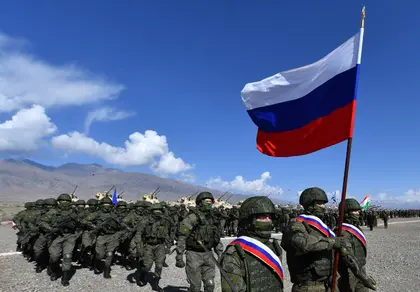
‘Who Will Join the Meat Grinder?’ – Russia Reassigns Drone Operators, Sparking Z-Blogger Criticism
In the interests of those still being held, Matvienko could not disclose detailed information about the conditions that the prisoners endured in Russian captivity.
However, he did say: “After the exchange all Ukrainian defenders have psychological and physical rehabilitation for at least two weeks. Almost all of them need medical care due to critical weight loss.”
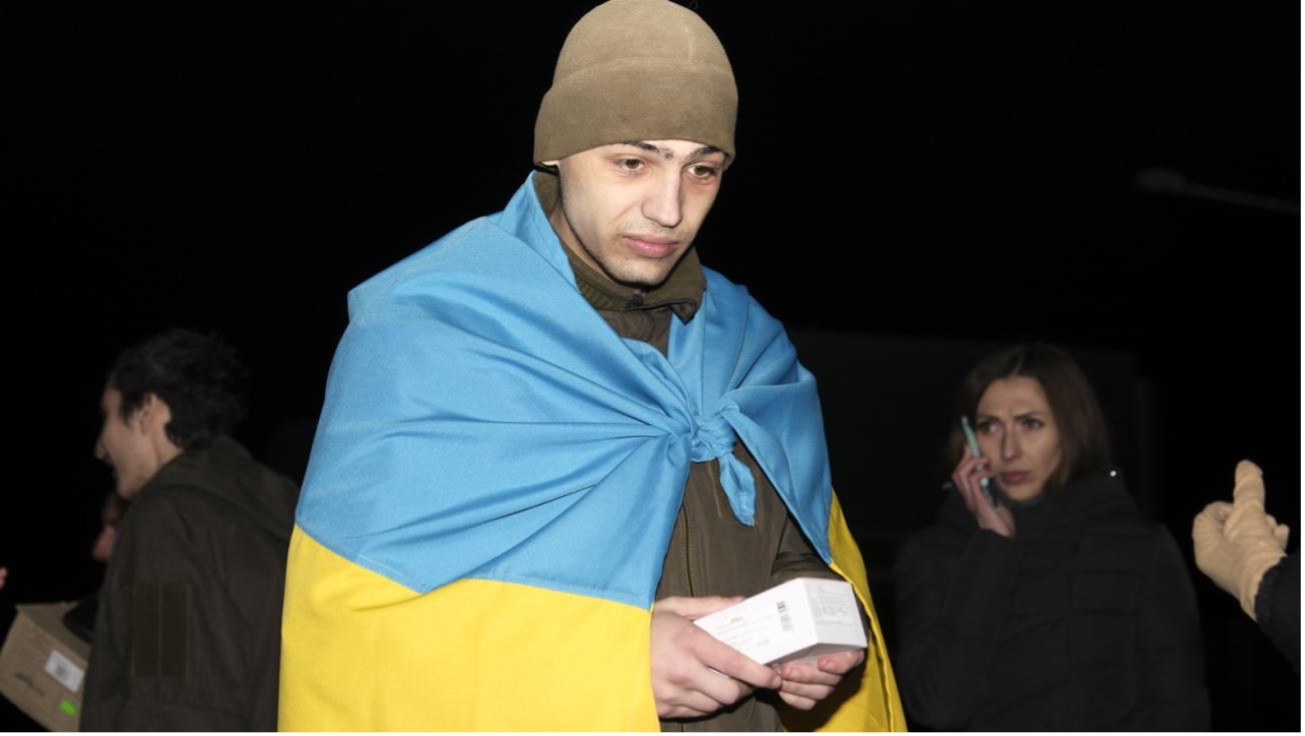 Ukrainian defender receiving a phone to contact his family after his release from captivity. Photo by Vitaliy Matvienko.
Ukrainian defender receiving a phone to contact his family after his release from captivity. Photo by Vitaliy Matvienko.
Serhiy, who spent seven months in Russian captivity, was released in October.
“During my entire time in captivity, we had no access to information,” he said. “There were no newspapers, radio, or television. We also didn’t know anything about what was happening at the front. There was no communication with relatives either.
“I called my friends,” Serhiy added, “and told them that I’m back, and they were responded: ‘Do you know that we’ve liberated the Kharkiv region and Kherson?’ And I was like ‘Oh, come on! We were told in captivity that most of Ukraine was occupied.’”
Matvienko says that the freed Ukrainian defenders do not know that Ukraine has liberated the Kharkiv region and Kherson because they are under an information blackout in captivity, so they are very happy to learn about the success of Ukrainian counteroffensives.
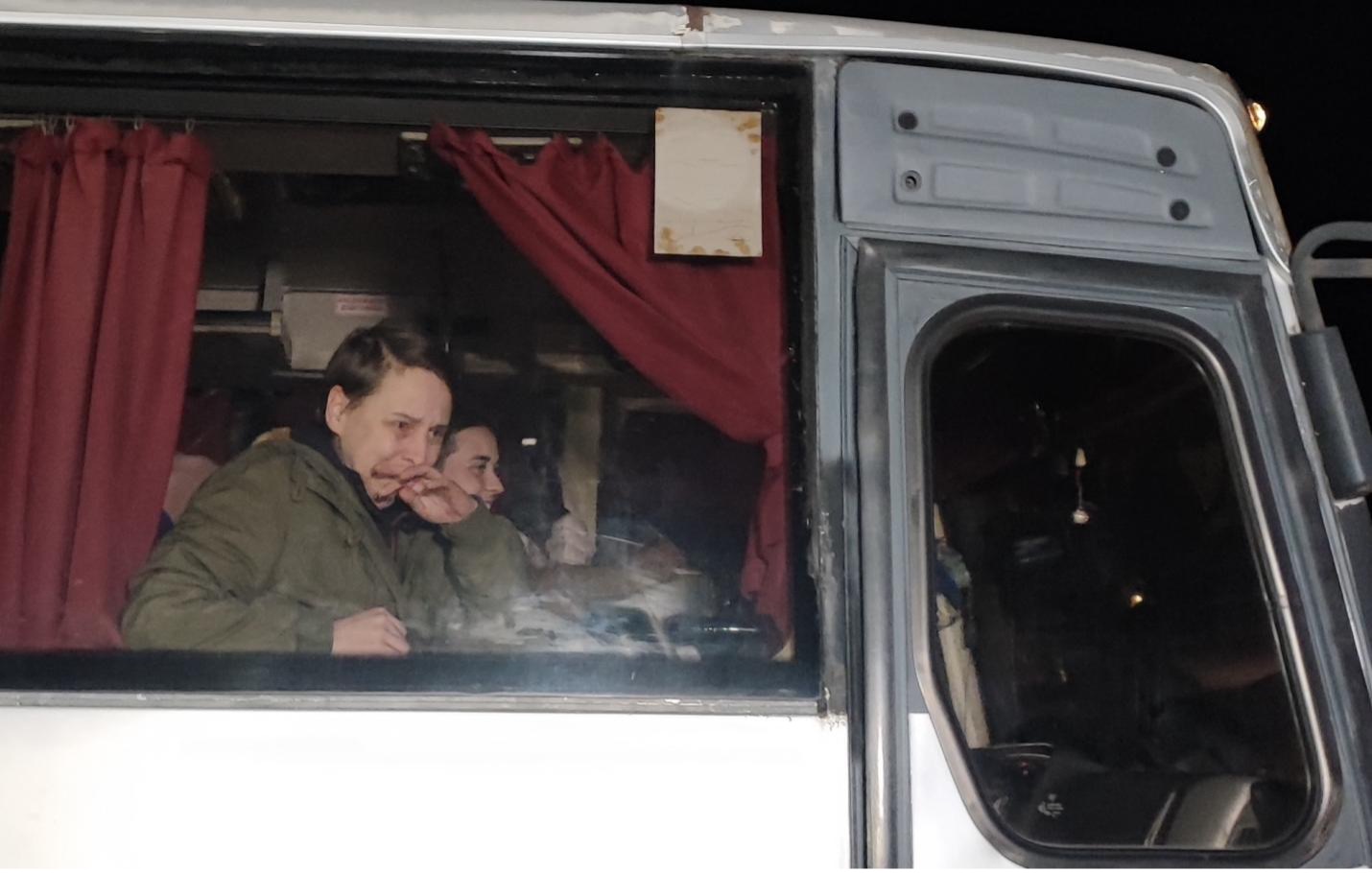
Released Ukrainian defenders. Photo by Vitaliy Matvienko.
Not much is known about the prisoner exchange process, because the release of unnecessary information might harm Ukrainians in Russian captivity.
“Before being transferred to the territory of the Russian Federation, Russian prisoners are debriefed about how to save their own lives and keep from being sent back to war,” Matvienko explained.
“One situation particularly impressed me,” he added. “There was an exchange of wounded Russian POWs who had difficulty moving on their own. When the Russians got off the bus and started heading for Russian-controlled territory, no one helped their wounded comrades. They were hobbling around on their own. We had to call some Russian prisoners back and tell them to help their comrades get to the Russian side.”
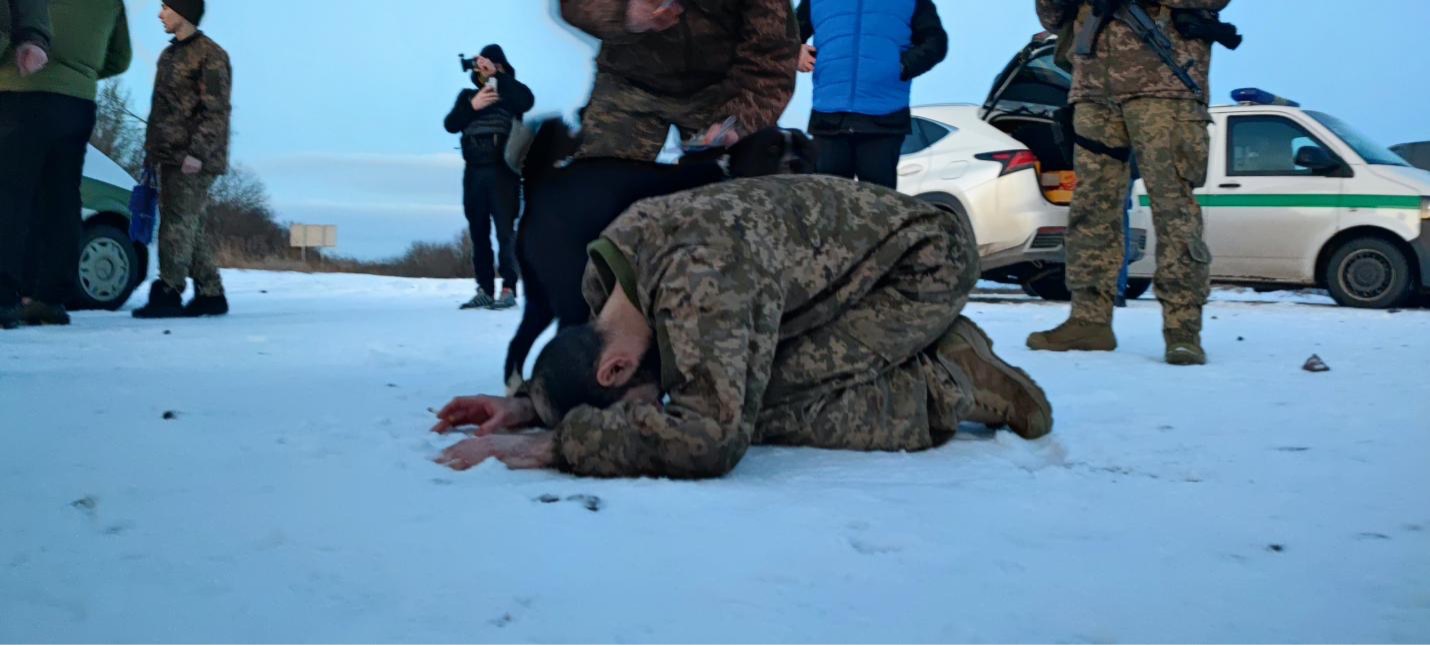 A released Ukrainian defender, 2023. Photo by Vitaliy Matvienko.
A released Ukrainian defender, 2023. Photo by Vitaliy Matvienko.
One of the defenders was released from captivity in February.
“I didn’t believe until the last moment that we were being taken for an exchange. I thought it was another transfer to another detention center. I thought... damn it... interrogations, getting used to it again... And then time stopped after I heard the first Ukrainian words: ‘Guys, raise your heads. You’re free! I couldn’t believe it was Ukraine, but when I saw our uniforms and flag, I couldn’t hold back my tears.”
The Coordination Headquarters ensures that not only our defenders are released, but civilians as well, according to Matvienko.
“There was a family – a man, woman, and their 20-year-old son. The father worked at a sawmill and returned home in the evening. Russian troops captured him and his son in March. They were suspected of being artillery gunners and forced to strip down to their underwear and stand in the cold for about two hours. Then they were taken to the territory of Russia and put in neighboring cells. The son heard his father’s screams, and then the father heard his son’s screams.”
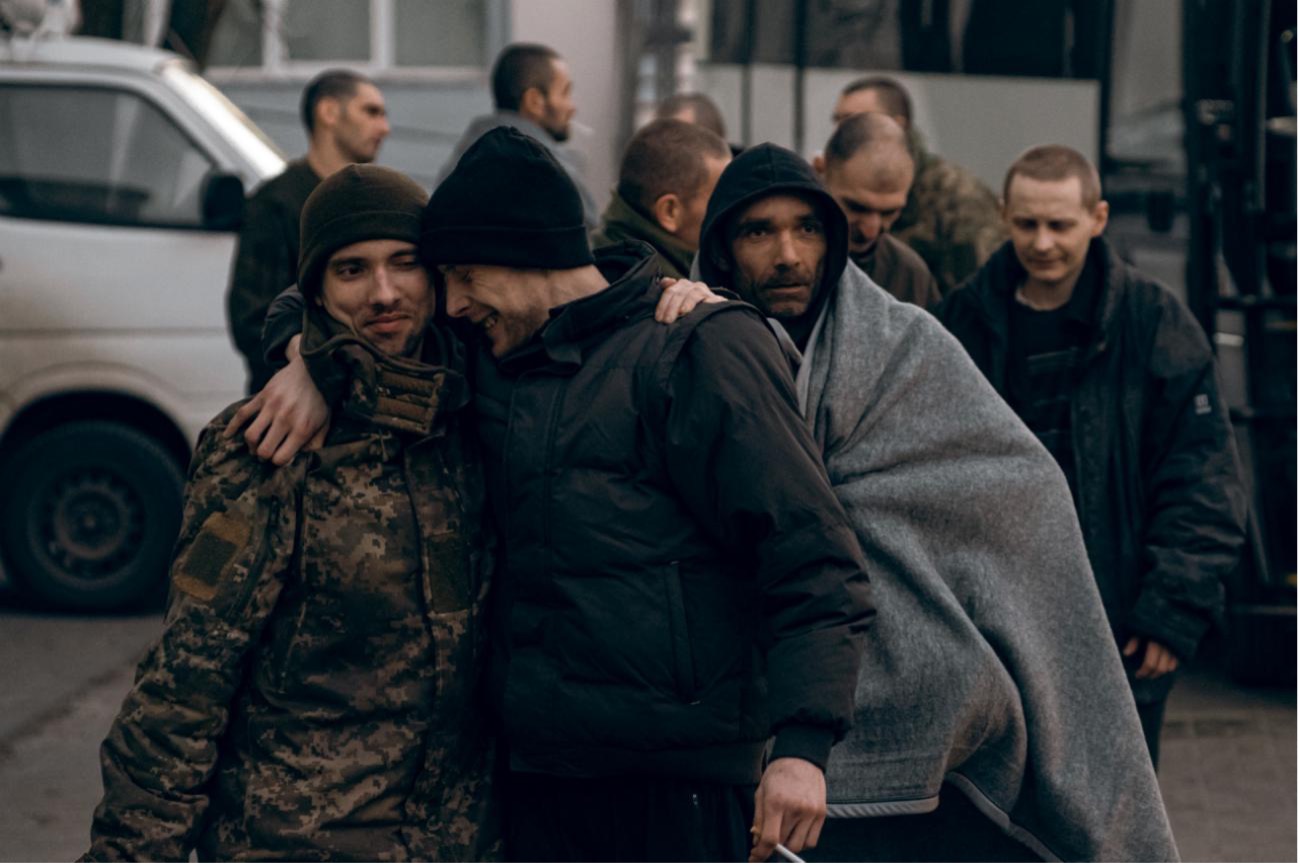 Released Ukrainian defenders. Photo by Tara Kurushkina.
Released Ukrainian defenders. Photo by Tara Kurushkina.
The Coordination Headquarters was established after the full-scale invasion on March 11, 2022, and is responsible for treating prisoners of war and exchanges. Since May 2022, the coordination center has been headed by Kyrylo Budanov, the head of the Main Intelligence Directorate of the Ukraine’s Ministry of Defense.
You can also highlight the text and press Ctrl + Enter


